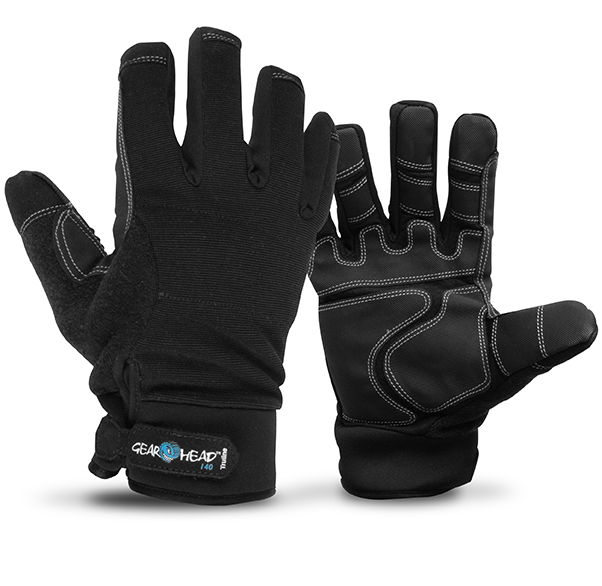What is Cold Stress?
What constitutes cold stress, and its effects can vary across different areas of the country. In regions that are not used to winter weather, near freezing temperatures are considered factors for "cold stress."

Increased wind speed also causes heat to leave the body more rapidly (wind chill effect). Wetness or dampness, even from body sweat, also facilitates heat loss from the body. Cold stress occurs by driving down the skin temperature, and eventually the internal body temperature. When the body is unable to warm itself, serious cold-related illnesses and injuries may occur, and permanent tissue damage and death may result. Types of cold stress include trench foot, frostbite, and hypothermia.
HOW CAN COLD STRESS BE PREVENTED?
Although OSHA does not have a specific standard that covers working in cold environments, under the Occupational Safety and Health Act (OSH Act) of 1970, employers have a duty to protect workers from recognized hazards, including cold stress hazards, that are causing or likely to cause death or serious physical harm in the workplace.
EMPLOYERS SHOULD TRAIN WORKERS. TRAINING SHOULD INCLUDE:
- How to recognize the environmental and workplace conditions that can lead to cold stress.
- The symptoms of cold stress, how to prevent cold stress, and what to do to help those who are affected.
- How to select proper clothing for cold, wet, and windy conditions.
EMPLOYERS SHOULD:
- Monitor workers physical condition.
- Schedule frequent short breaks in warm dry areas, to allow the body to warm up.
- Schedule work during the warmest part of the day.
- Use the buddy system (work in pairs).
- Provide warm, sweet beverages. Avoid drinks with alcohol.
- Provide engineering controls such as radiant heaters.
TYPES OF COLD STRESS
IMMERSION/TRENCH FOOT
Trench foot is a non-freezing injury of the feet caused by prolonged exposure to wet and frigid conditions. It can occur in temperatures as high as 60°F if feet are constantly wet. Injury occurs because wet feet lose heat 25-times faster than dry feet.
What are the symptoms of trench foot?
Reddening skin, tingling, pain, swelling, leg cramps, numbness, and blisters.
![]() FIRST AID
FIRST AID
- Call 911 immediately in an emergency; otherwise seek medical assistance as soon as possible.
- Remove wet shoes/boots and wet socks.
- Dry the feet and avoid working on them.
- Keep affected feet elevated and avoid walking. Get medical attention.
THE RISK OF FROSTBITE IS INCREASED IN PEOPLE WITH REDUCED BLOOD CIRCULATION, AND AMONG PEOPLE WHO ARE NOT DRESSED PROPERLY FOR EXTREMELY COLD TEMPERATURES.
FROSTBITE
Frostbite is caused by the freezing of the skin and tissues. Frostbite can cause permanent damage to the body, and in severe cases can lead to amputation. The risk of frostbite is increased in people with reduced blood circulation, and among people who are not dressed properly for extremely cold temperatures.
What are the symptoms of frostbite?
Reddened skin develops gray/white patches in the fingers, toes, nose, or ear lobes; tingling, aching, a loss of feeling, firm/hard, and blisters may occur in the affected areas.
![]() FIRST AID
FIRST AID
Follow the recommendations described below for hypothermia.
- Protect the frostbitten area, e.g., by wrapping loosely in a dry cloth and protect the area from contact until medical help arrives.
- DO NOT rub the affected area, because rubbing causes damage to the skin and tissue.
- Do not apply snow or water. Do not break blisters.
- DO NOT try to re-warm the frostbitten area before getting medical help, for example, do not use heating pads or place in warm water. If a frostbitten area is rewarmed and gets frozen again, more tissue damage will occur. It is safer for the frostbitten area to be rewarmed by medical professionals.
- Give warm sweetened drinks if alert (no alcohol).
HYPOTHERMIA IS PARTICULARLY DANGEROUS BECAUSE A PERSON MAY NOT KNOW WHAT IS HAPPENING AND WON'T BE ABLE TO DO ANYTHING ABOUT IT.
HYPOTHERMIA
Hypothermia occurs when the normal body temperature (98.6°F) drops to less than 95°F. Exposure to cold temperatures causes the body to lose heat faster than it can be produced. Prolonged exposure to cold will eventually use up the body's stored energy. The result is hypothermia, or abnormally low body temperature. Hypothermia is most likely at very cold temperatures, but it can occur even at cool temperatures (above 40°F) if a person becomes chilled from rain, sweat, or immersion in cold water.
What are the symptoms of hypothermia?
An important mild symptom of hypothermia is uncontrollable shivering, which should not be ignored. Although shivering indicates that the body is losing heat, it also helps the body to rewarm itself. Moderate to severe symptoms of hypothermia are loss of coordination, confusion, slurred speech, heart rate/breathing slow, unconsciousness and possibly death.
Body temperature that is too low affects the brain, making the victim unable to think clearly or move well. This makes hypothermia particularly dangerous because a person may not know what is happening and will not be able to do anything about it.
![]() FIRST AID- CALL 911 IMMEDIATELY IN AN EMERGENCY
FIRST AID- CALL 911 IMMEDIATELY IN AN EMERGENCY
Follow the recommendations described below for hypothermia.
- Move the worker to a warm, dry area.
- Remove any wet clothing and replace with dry clothing. Wrap the entire body (including the head and neck) in layers of blankets; and with a vapor barrier (e.g., tarp, garbage bag) Do not cover the face.
IF MEDICAL HELP IS MORE THAN 30 MINUTES AWAY
- Give warm sweetened drinks if alert (no alcohol), to help increase the body temperature. Never try to give a drink to an unconscious person.
- Place warm bottles or hot packs in armpits, sides of chest, and groin. Call 911 for additional rewarming instructions.
CONTACT US
CUSTOMER SERVICE
CONTACT US












